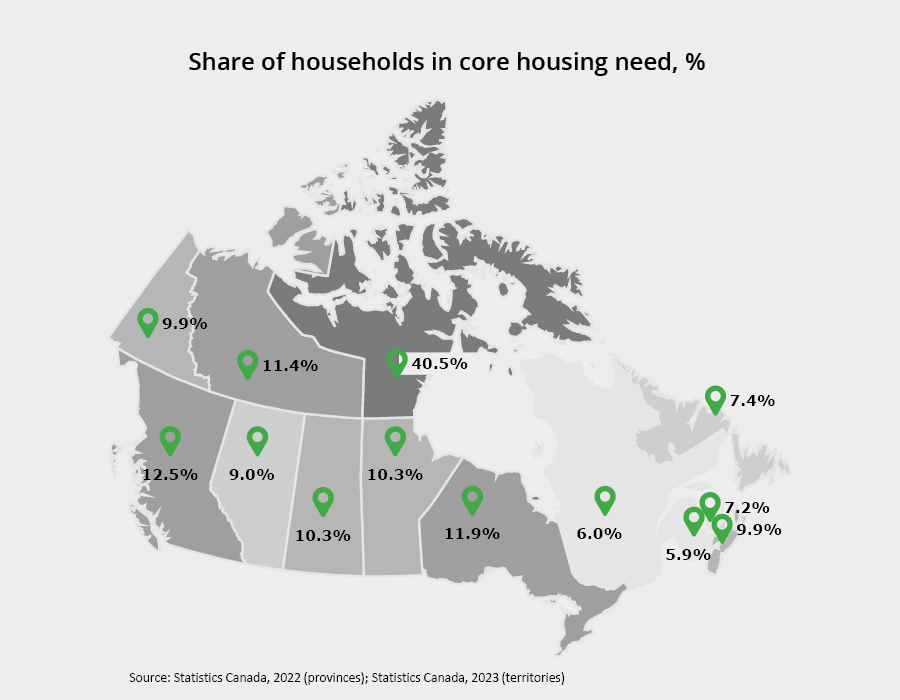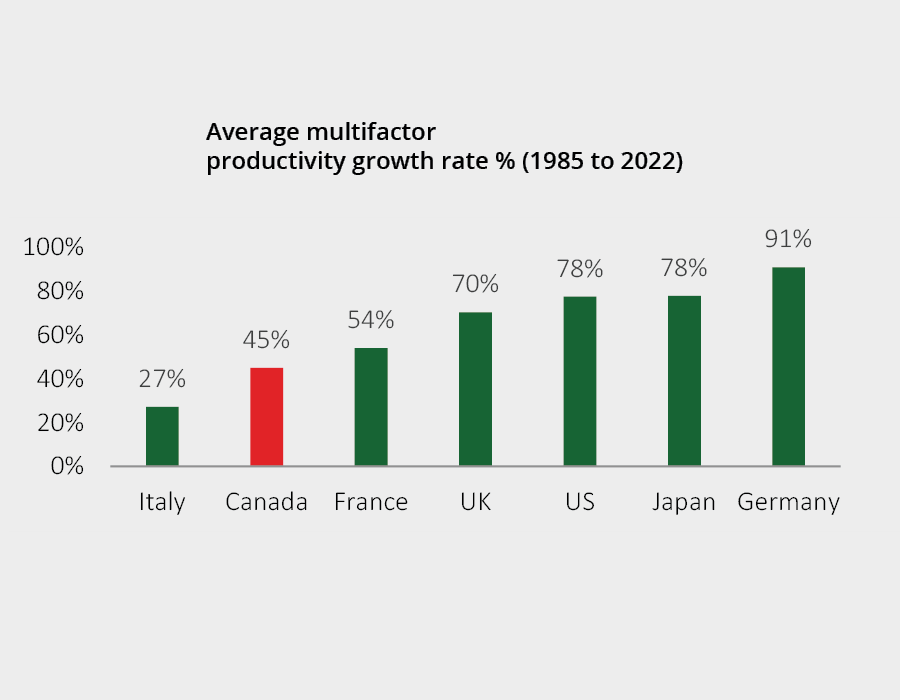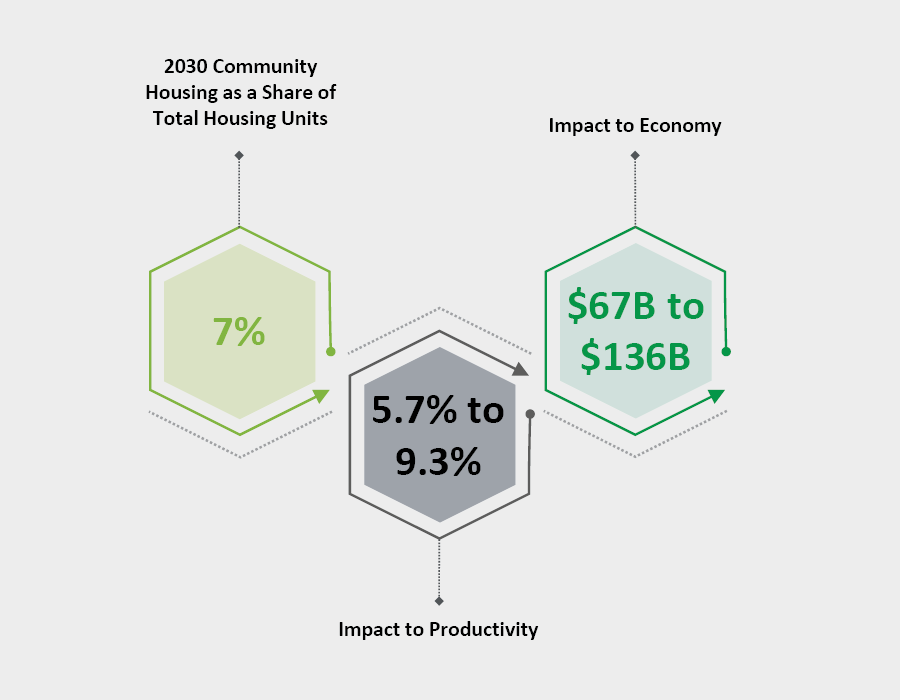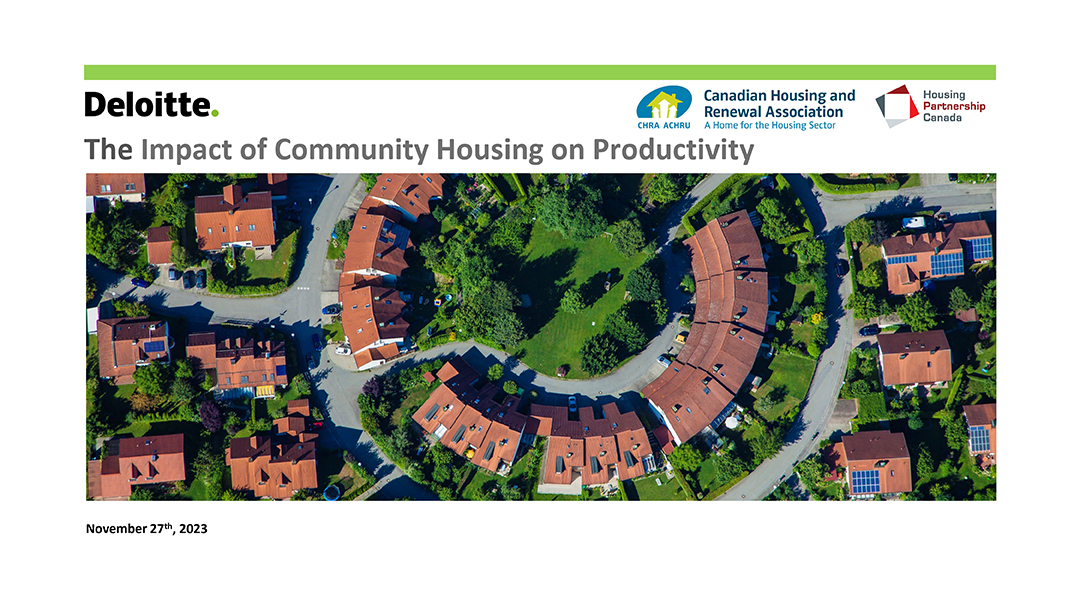The imperative of community housing goes beyond its contribution to the social safety net and proves to be an economic necessity, according to a study on the impact of community housing on productivity.
The Canadian Housing and Renewal Association (CHRA), Housing Partnership Canada and sector partners commissioned Deloitte to undertake the study. The results demonstrated a causal link between community housing and economic productivity.
This essential work highlights the relevance and necessity of investing in community housing and provides valuable arguments for the entire sector to advance in our shared mission.
In fact, this is what prompted the CHRA to conduct its survey. In an interview, Ray Sullivan, the CHRA’s Executive Director, confided that the relationship between community housing and productivity was, until now, a hunch for many. We now have the proof.
On the other hand, creating community housing is often assumed to be very expensive. This belief is reflected in the views of many stakeholders, including the Canadian government. For Ray Sullivan, it was necessary to demonstrate that there is also a cost to not invest in community housing.
“We know the housing rights argument. We know the social argument, and we wanted to find an additional economic argument that would continue to support what we’re trying to advance,” says Sullivan.
Community housing: a solution to the housing crisis and a vector of wealth
As housing costs continue to rise rapidly, 2.6 million Canadians find themselves in core housing need. The lack of community housing contributes to this reality. Waiting lists are getting longer and longer, and projects are struggling to find the funding they need to get off the ground.

In Canada, one household in ten is inadequately housed due to the housing quality, safety, or affordability. Nunavut has the highest number of households in core housing need. (40%).
At the same time, Canada is facing a slowdown in productivity. The country falls behind other countries belonging to the Organization for Economic Cooperation and Development (OECD). This trend has intensified since the end of the pandemic.

Canada’s productivity growth falls behind most OECD countries.

“We won’t solve our economic problems until we solve our housing problems. And it turns out that the solution is the same. It’s about increasing the supply of community housing.”
Ray Sullivan, Executive Director, CHRA
According to Deloitte and the CHRA, observation of the link between productivity and community housing since 1962 shows that growth in the number of community housing units goes hand in hand with growth in productivity. Investing in community housing would therefore have a dual effect: alleviating the housing crisis and stimulating the Canadian economy.
“When we started the study, we didn’t know what the outcome would be […]. This is an honest economic survey, and it wasn’t certain that there would be a tangible, significant result. But there was, and not only was it tangible and significant; it was also tested in five different ways leading to the same result. It was actually a causal result,” explains Sullivan.
Investment in community housing stimulates the economy
Community housing represents an average of 7% of the total housing stock in OECD countries. In Canada, unfortunately, it currently accounts for just 3.5% of the market. The report suggests that Canada needs to produce 371,600 new community housing units if it is to catch up with the OECD average.

Canada is below the OECD average in terms of community housing market share.

Significant investment is needed in Ontario, Quebec, British Columbia, and Alberta to reach the target of 7% market share by 2030.
It may seem like a lot, but the study shows that by reaching this target, the country could increase its economic productivity by 5.7% to 9.3%. This would equate to an estimated increase in GDP ranging from $67 billion to $136 billion.

Increased market share for community housing has a positive impact on productivity and GDP. “When it comes to moving the needle on economic productivity, it’s really significant,” comments Ray Sullivan.
Community housing stimulates the creation of new jobs, improves existing jobs, and, by the same measure, the quality of life of Canadians. It stimulates growth by reversing the negative effects of the speculative market on productivity.
The commodification of housing is driving up rental costs, forcing households to move away from central areas to find housing. As a result, they find themselves far from their place of employment, and spend a lot of time commuting. Moreover, Canadian households spend a very high proportion of their income on housing, leaving them without the means to improve their quality of life or develop professionally. These constraints do not affect people living in non-speculative housing.
Businesses are also affected by this reality. In some less densely populated parts of the country, such as the North, companies are having to reduce their growth budgets to finance housing for their employees. Others are reluctant to set up in regions where the workforce is under-qualified, partly because the high cost of rent will force them to pay wages they cannot afford to attract those who are. These facts show that community housing is not just a social investment or a safety net for the most disadvantaged, but also a vector for economic development.
The high cost of housing on the private market is not productive for the economy. It is a dead investment, swallowed up in real estate capital benefiting an extremely small number of economic players. Community housing counters the damaging effects of the financialization of housing and boosts the country’s productivity and wealth.
The CHRA estimates that the economic benefits will outweigh the costs within two years of achieving the 7% community housing stock growth target – which represents an incredibly short payback period for any kind of investment.
The CHRA’s recommendations for improving GDP and living conditions
In its conclusion, the report presents five recommendations to increase the supply of community housing and boost Canada’s productivity:
- Increase investment in community housing to boost productivity and Canada’s GDP.
- Commit to stable and predictable funding, financing, and tax incentives to build new homes and equip community housing providers with the resources to renew or acquire existing units over a long horizon.
- Provide dedicated funding for urban, rural, and northern Indigenous housing.
- Improve collaboration across provincial governments, municipalities, and builders to tackle the housing crisis.
- Support Canadian innovation that builds housing more quickly, sustainably, and affordably.
These recommendations form a comprehensive framework aimed not only at alleviating the housing crisis, but also at resuscitating Canada’s economic productivity in a sustainable and equitable manner.
In the Fall 2023 Economic Statement, the government committed an additional $15 billion to for-profit market housing programs and only $1 billion in contributions to non-market housing.
According to the authors of this report, the government is not investing enough in community housing. We need to focus on increasing the supply of non-market housing “not only because the right to housing demands it, not only because our communities and neighbors desperately need it, but also because it helps improve the economy,” says Sullivan, concluding: “We won’t solve our economic problems until we solve our housing problems. And it turns out that the solution is the same. It’s about increasing the supply of community housing.”



